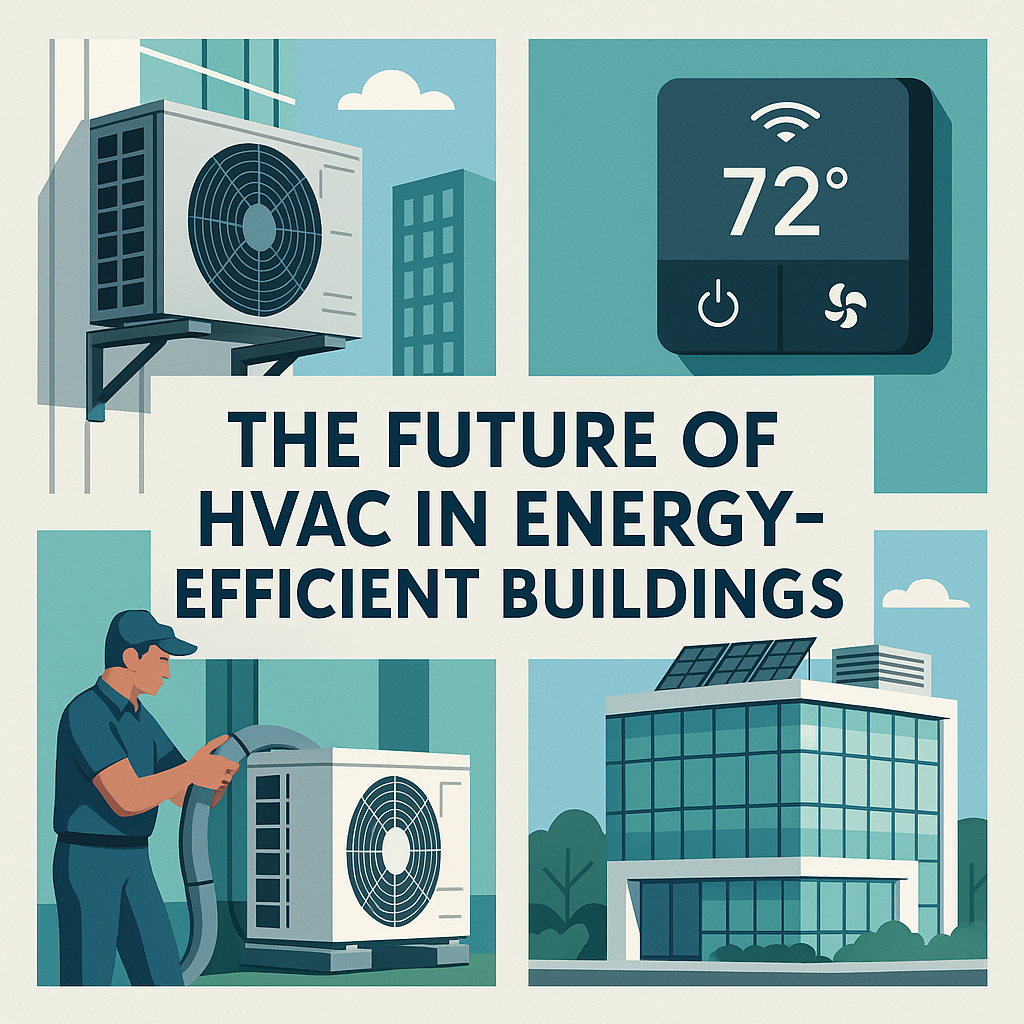The future of HVAC in energy-efficient buildings is accelerating faster than ever as owners, developers and engineers push for lower energy use, reduced carbon emissions and healthier indoor environments. HVAC systems—historically responsible for a large percentage of building energy consumption—are now at the center of high-performance building design. The shift toward smarter, cleaner and more connected HVAC technologies is redefining how buildings operate, how energy is managed and what occupants expect from indoor comfort.
Why HVAC Efficiency Matters More Than Ever
Heating and cooling systems contribute significantly to building energy loads, often accounting for nearly half of total consumption in commercial and residential spaces. As energy codes tighten and environmental standards become more stringent, the future of HVAC hinges on efficiency, electrification and intelligent automation. Modern buildings now rely on HVAC systems not only for comfort but also as strategic tools to meet energy-performance targets, sustainability goals and long-term operational savings. This makes HVAC an essential element of any energy-efficient building strategy.
Smart HVAC Controls Are Leading the Next Wave of Innovation
One of the most influential trends shaping the future of HVAC is the adoption of smart controls powered by sensors, AI and machine-learning algorithms. These advanced control platforms allow HVAC systems to adjust automatically based on real-time occupancy, outdoor conditions, humidity levels and energy pricing. Instead of running on fixed schedules or outdated thermostats, smart HVAC systems continuously optimize performance. This data-driven approach improves energy efficiency, enhances occupant comfort and lowers costs—three core priorities in energy-efficient building design.
Heat Pumps Are Fueling the Push Toward Fully Electrified Buildings
Heat pumps are positioned to dominate the next generation of energy-efficient buildings due to their exceptional efficiency and versatility. Because heat pumps transfer heat rather than generate it, they can deliver substantial energy savings compared to traditional gas-fired boilers or electric resistance heating. As governments and utilities promote electrification, heat pumps are becoming the preferred choice for both new construction and HVAC retrofits. Modern heat pumps also use low-GWP refrigerants, helping buildings meet emission reduction goals while improving year-round comfort.
Renewables, HVAC Integration and the Rise of Thermal Energy Storage
The future of HVAC is deeply intertwined with the rise of renewable energy. Solar and wind generation are increasingly common on building sites, and HVAC systems designed for energy-efficient buildings now integrate directly with these renewable sources. Through thermal energy storage—such as ice tanks or phase-change materials—buildings can shift heating and cooling loads to off-peak hours when electricity is cleaner and cheaper. This integration reduces operational costs, increases grid stability and helps buildings achieve net-zero or near-zero energy performance.
Indoor Air Quality (IAQ) Drives the Next Era of HVAC Design
Indoor air quality has become a major driver of HVAC innovation. Energy-efficient buildings must now balance low energy consumption with high-performance ventilation, filtration and humidity control. Advanced HVAC systems use demand-controlled ventilation, high-efficiency particulate filtration and intelligent airflow monitoring to ensure healthier indoor environments. This new emphasis on IAQ aligns with occupant expectations for cleaner, more comfortable and more reliable indoor spaces—especially in offices, schools, hospitals and multifamily housing.
What This Means for Building Design and Operations
Energy-efficient HVAC systems are reshaping how buildings are designed, built and managed. Effective HVAC performance depends on early coordination between architects, engineers and contractors. High-performance envelopes, smart controls and efficient mechanical systems must be designed as a cohesive whole. Once operational, advanced monitoring tools allow facility teams to analyze HVAC performance continuously, detect inefficiencies and predict maintenance needs. This approach reduces downtime, extends equipment lifespan and ensures that energy-efficient buildings achieve their intended performance.
Challenges in the Transition to High-Efficiency HVAC Systems
Despite significant progress, adopting next-generation HVAC systems comes with challenges. Initial investment costs can be higher, especially when integrating smart controls, heat pumps or thermal storage. Retrofitting older buildings may also require extensive modifications to ductwork, electrical systems or mechanical rooms. Additionally, building operators and technicians must adapt to more sophisticated technologies, requiring new training and digital expertise. Overcoming these challenges is essential for scaling the adoption of energy-efficient HVAC systems across the built environment.
The Next Decade of HVAC Technology
Over the next 10 years, HVAC systems will become even more intelligent, predictive and interconnected. AI-driven optimization will be standard, enabling buildings to automatically adjust energy usage in response to weather, occupancy and utility signals. Electrification will expand dramatically, with heat pumps becoming the primary HVAC solution for both residential and commercial projects. Advanced IAQ monitoring, grid-interactive HVAC systems and large-scale thermal storage will support a more resilient and energy-efficient built environment.
The future of HVAC in energy-efficient buildings is defined by innovation, integration and sustainability. With smart controls, high-efficiency heat pumps, renewable-energy integration and advanced IAQ technologies, HVAC systems are transforming from basic mechanical equipment into essential components of high-performance building design. As the industry moves toward net-zero construction and healthier indoor environments, HVAC will remain a critical driver of building efficiency and long-term value.
HVAC systems are entering a new era of smart technology, electrification and integration with renewable energy. With heat pumps, AI-driven controls and improved indoor air quality strategies, the future of HVAC in energy-efficient buildings centers on intelligent performance, lower energy use and healthier indoor environments.
FAQ
What HVAC technologies will define the next decade?
Smart controls, heat pumps, renewable integration and thermal energy storage will play leading roles.
Can energy-efficient HVAC systems work in older buildings?
Yes. Retrofits can deliver major efficiency improvements, though they often require upgraded controls, insulation and mechanical components.
How do smart HVAC systems improve efficiency?
By using real-time data to automatically adjust heating, cooling and ventilation based on occupancy, weather and energy demand.

